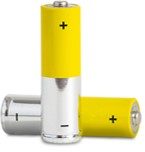TSCH - Time Synchronized Channel Hopping
What is Time Synchronized Channel Hopping (TSCH)?
TSCH (Time Synchronized Channel Hopping) was introduced in IEEE 802.15.4-2015 as a frequency hopping mode and has been added as a new PHY/MAC layer to our Sub-GHz mesh solution, RIIM. TSCH works by sending data transmissions at several frequencies from a pre-set frequency list and at different time slots in a synchronized schedule. If a packet is lost between two devices, it is re-sent on a different channel in the next available time slot. Therefore, TSCH ensures mesh radios have plenty of safe margin, including in environments with narrow noise or significant interference, creating a mesh network with minimal packet collisions and high reliability. TSCH has a proven track record of 99.99% successful data packet delivery rates, allowing you to design a highly scalable and reliable mesh network.
TSCH Features:

Unmatched reliability in data transmission success rates

High resilience to RF interference

Battery-operated mesh routers for long lasting projects

All nodes are time synchronized in the network

Frequency hopping on 50 channels (required for FCC)

High data throughput for applications with high data requirements
Polite Spectrum Access Techniques For Increased Reliability
In addition to frequency hopping, TSCH enables another key feature for improved scalability and reliability called Polite Spectrum Access Techniques. Polite Spectrum Access is a technique that ensures radios use the available radio spectrum in a polite manner, therefore, allowing a radio to exceed the 1% duty cycle restriction in Europe up to 37%. This enables high data throughput networking for applications with higher data capacity requirements.
Polite Spectrum Access consists of two parts, Listen-Before-Talk (LBT) and Adaptive Frequency Agility. LBT is a technique where the radio scans a given channel which is assigned to it by the TSCH algorithm before transmitting on it. If the channel is found to be noisy, it will wait before transmitting. This significantly increases the radio’s resilience to noise, boosting the mesh network’s reliability. Adaptive Frequency Agility works on top of LBT by scanning all channels and marking the channels which are often found to be noisy. The noisy channels are then removed from the frequency hopping list, ensuring that the mesh radio only uses the best available channels with the least amount of noise.
In summary, Polite Spectrum Access Techniques ensures that the radio listens for a short time before transmitting on a given channel, and if that channel is often found to be noisy, it is dropped from the channel hopping list. This is a state-of-the-art technique which ensures maximum reliability for radio transmissions and allows for highly scalable mesh networks while keeping cost, complexity, and power consumption low.
Read more about Polite Access Spectrum Technique below!

Low Power Consumption For Long Lasting Project
Another important aspect to consider with mesh networks is that they are self-forming, self-healing, and self-optimizing, which comes at a price. This price includes increased overhead data transmissions, for example, to send rerouting instructions, which directly translates to more radio-on time, leading to more power consumption. TSCH also provides a solution for this problematic situation enabling a robust mesh network which can operate using battery-operated mesh routers. With TSCH, mesh routers can run on 2 AA batteries with a battery lifetime of up to 7 + years in the field while sending frequent data transmissions. Battery-operated mesh routers are only active or receiving in short time slots meaning they spend the rest of the time in sleep mode, thus, helping them save power. TSCH gives you the opportunity to reap all the benefits of mesh networks while keeping battery consumption low.
Read more about battery-operated mesh routers below!

Distinct Channel Hopping For Networks Operating in Close Proximity
On top of TSCH, Radiocrafts has developed a new technology feature called Distinct Channel Hopping which was designed to make a wireless mesh network with significantly less packet collisions and data overlaps in an environment where several RIIM mesh networks are operating at the same time and in close proximity. Distinct Channel Hopping allows you to send data packets from several different RIIM networks in the same time slot but at different frequencies (on different channels) creating a collective system where the data packets never overlap, reducing the possibility of packet collisions significantly. Even over several time slots, the messages never overlap, creating an ultra-reliable network including in environments where several RIIM networks are operating at the same time.

TSCH with the added Distinct Channel Hopping feature allows you to design several scalable mesh networks operating at the same time with little to no interference between each other, creating a system supporting unmatched reliability, ultra-low power consumption for long lasting projects, high data throughput for projects requiring high data requirements, and much more!
Typical examples of use cases which might benefit from TSCH include, Smart Irrigation Control, Solar Tracking, Sub-Metering, Energy Storage Solutions, Emergency Lighting, Smart Street Lighting, and more.
